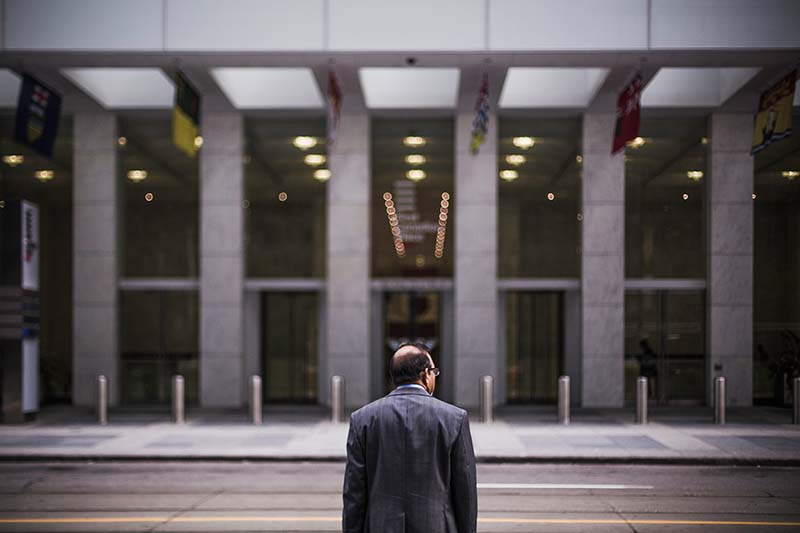Ensuring the safety of workers returning to offices and students to schools is a critical concern of facility managers. The HVAC industry offers several innovations to help reach this goal.
Honeywell launched an integrated set of solutions to help building owners improve the health of their building environments, operate safely and cleanly, comply with social distancing policies, and help reassure occupants that it is safe to return to the workplace. By integrating air quality, safety and security technologies, and advanced analytics, Honeywell's Healthy Buildings solutions are designed to help building owners minimize potential risks of contamination and ensure business continuity by monitoring both the building environment and building occupants' behaviors.
"Returning to work after a pandemic will not be returning to business as usual,” said Vimal Kapur, president and CEO of Honeywell Building Technologies. “Occupants will want credible information and increased visibility into how building technology is protecting their health and what has been done to ensure that the buildings they enter are safe. Healthy buildings go beyond just energy efficiency to ensure the health, comfort, confidence, and productivity of the people who use them."

BACK TO WORK: As workers re-enter buildings, owners and other stakeholders want to make sure they have health spaces in which to work.
The system takes into account a range of factors, including CO2, particulates, and humidity. It then takes the variables, adds weighting, and inputs them into an algorithm, creating a #HealthyBuilding score.
“It provides an almost instantaneous and also a trended view of the current health of the building,” said Pat Tessier, Honeywell’s senior director of global product management.
Information Drives Re-Opening Practices
Honeywell is in the business of providing information to building owners, Tessier said, and helping them make informed decisions. By viewing various statistics, owners and other stakeholders can develop the best approach for using the recommendations provided by authorities such as the Centers for Disease Control and Prevention, the World Health Organization, and the American Society of Heating, Refrigerating and Air-Conditioning Engineers (ASHRAE). For example, ASHRAE recommends using 100 percent outdoor air for ventilation. While that may not be possible for all customers, Honeywell can help them move toward that goal, Tessier said.

SAFE SPACES: HVAC technology plays a crucial role in creating a healthy environment for work and learning.
“We’re using these inputs and working with these various organizations to say to our end customers that we can help them,” he said. “We’re getting a lot of interest as people to try to figure out how to do this effectively.”
The system presents the information in an easy to use format via a dashboard. Facility managers can use something as simple as color-coding for separate zones to determine the health status. The systems work together to collect crucial information. A key innovation is ThermoRebellion. This temperature monitoring solution can be rapidly deployed at the entryway of any commercial building to identify whether personnel exhibit an elevated facial temperature. Data collection will improve with the deployment of artificial intelligence and an increase in monitoring tools, Tessier said.
“The more sensors we can employ in the building, the more information we can gather,” he said.
The company has also developed an Environment Control System Health check that allows airlines to quickly use aircraft data and advanced analytics to monitor for and ensure healthy air quality in the cabin. Additionally, it's applying the Honeywell Forge platform to help customers operate their buildings, factories, warehouses, supply chains, and aircraft more efficiently and in ways that promote the health and safety of occupants, workers, and passengers.
Schools Invest in Student Health
Honeywell solutions can be tailored to the unique needs of commercial buildings, airports, hospitality, healthcare, and education sectors. Another company, Madison Industries, has put together a website on indoor air hygiene to profile all the offerings from its various brands, including HVAC provider Addison-HVAC. The Indoor Air Hygiene Solution Center is located at indoorairhygiene.com.
“As the scientific community better understands the spread of COVID-19, they are increasingly looking at airborne transmission,” said Kris Howard, president of Addison’s filtration group.
Addison helped pioneer direct outdoor air systems (DOAS). A main focus for the company right now is helping schools re-open in the fall by providing more fresh air, filtration, and humidity control. Ross Miglio, Addison’s president, said schools will have different levels of needs.
“Every one of these schools will need replacement filters,” Miglio said. “Maybe a few of them will need dehumidifiers. Maybe some of these school districts will have future construction projects that will get configured from a DOAS standpoint.”
Some air solutions may play off other precautions, he said. For example, a school may steam clean a carpet as part of its cleaning process and then find this created excess humidity. Addison sells a roll-in dehumidifier that can be used in that situation. Addison’s goal is helping the schools come up with a plan based on the guidelines available to them, Miglio said.
“The breadth of what we have allows us to give them what’s right for their schools, rather than forcing something they may or may not need,” he said. “It’s really up to the schools, but at a minimum, they’re going to want to make sure their filtration is up to snuff.”
Some communities may not have built a new school in years, even decades. This means they may need to invest even more in their air systems. Miglio said schools haven’t always been as diligent as they should be when it comes to filtration changes. He expects that to change. Maintenance needs will increase, too. For example, if they add more UV lights to prevent spread, they need to make sure those are functioning properly.
Facility managers have focused on comfort and other immediate issues. Now, the dynamic has changed — and so has the culture, requiring a deeper look at what is happening in buildings.
“It comes down to very simple things,” Miglio said. “You’ve got to create solutions for safer and healthier indoor environments. That’s more true than ever.”



Report Abusive Comment